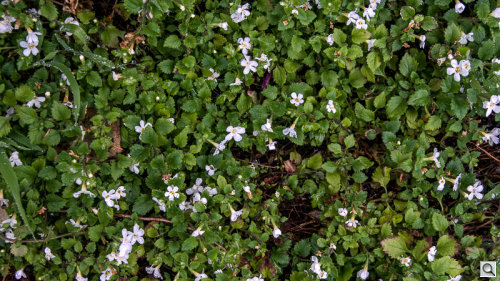Photo Corners headlinesarchivemikepasini.com
![]()
A S C R A P B O O K O F S O L U T I O N S F O R T H E P H O T O G R A P H E R
![]()
Enhancing the enjoyment of taking pictures with news that matters, features that entertain and images that delight. Published frequently.
Friday Slide Show: A Rainy Day




4 March 2016
Brilliant sunshine is irresistible light. Fog makes for mystery. But rain portends Parcheesi. Cleaning up some weekend yard work earlier this week inspired us to leave the board games in the closet and hazard the drizzle with our Nikon D300.
We could say we don't often shoot in the rain but droughts will do that to a person. A light drizzle kept the streets wet and formed lovely drops on the flora in the garden, so we thought we'd try a few shots.
The garden, we should explain, is not going to appear in Sunset magazine. It was, we often point out to visitors, planted by birds and irrigated by gophers. We like to refer to it as "sustainable." Because it does what it wants.
Still it has its beauties. And continues to attract hummingbirds and blue jays and crows and red-tailed hawks and raccoons and coyotes and snails and bees and cats and those gophers.
The garden, we should explain, is not going to appear in Sunset magazine.
We negligently left the polarizer on our lens thinking how can it hurt. ISO 400. Aperture Priority at f8 to get some kind of depth for what we knew would be close ups. Details of the garden, no overviews.
But we had fun walking around getting our cuffs wet as we looked for a composition that appealed to us.
There was quite a bit in bloom considering it's still winter.
Our first peek at the stills in Photo Mechanic was not very encouraging. Shutter speeds had been as low as 1/15 second. But the 18-200mm Nikkor is a stabilized lens, so that should not have been an issue. And we know better than to trust the Raw-file thumbnails for things like exposure.
Still, we thought we should use a slightly different post processing route. So we ran the DNG conversion through Piccure+ before importing those TIFFs into Lightroom. And we're glad we did.
It gave us a better starting point. We could see which images had problems post processing wouldn't help without trying to process them ourselves. The baker's dozen we selected for this show still got a healthy dose of post but it was fun tweaking them.
For the last few slide shows, we've started our edits by applying a preset we created that sets our favorite dose of Clarity and makes the typical (if strong) Highlight, Shadow and Contrast adjustments we like. We use it as a starting point, although it does dramatically shift the image.
For these images, we adjusted the Exposure a good bit and darkened the Blacks. We had to recover the highlights here and there, too. We cropped the 3:2 images all sorts of ways, 16:9 and 1:1 among them. And we did a good bit of rotating, although we only used the Upright tool on the door knob image.
It was quick work. Piccure+ worked away while we were otherwise employed and our manual post processing in Lightroom took less than half an hour (including time admiring the changes).
We do regret we can only show you the sRGB exports because the images we were looking at in Lightroom are much richer.
Which is how we feel after braving the weather to slosh through the overgrown garden for a few compositions we don't usually capture.
